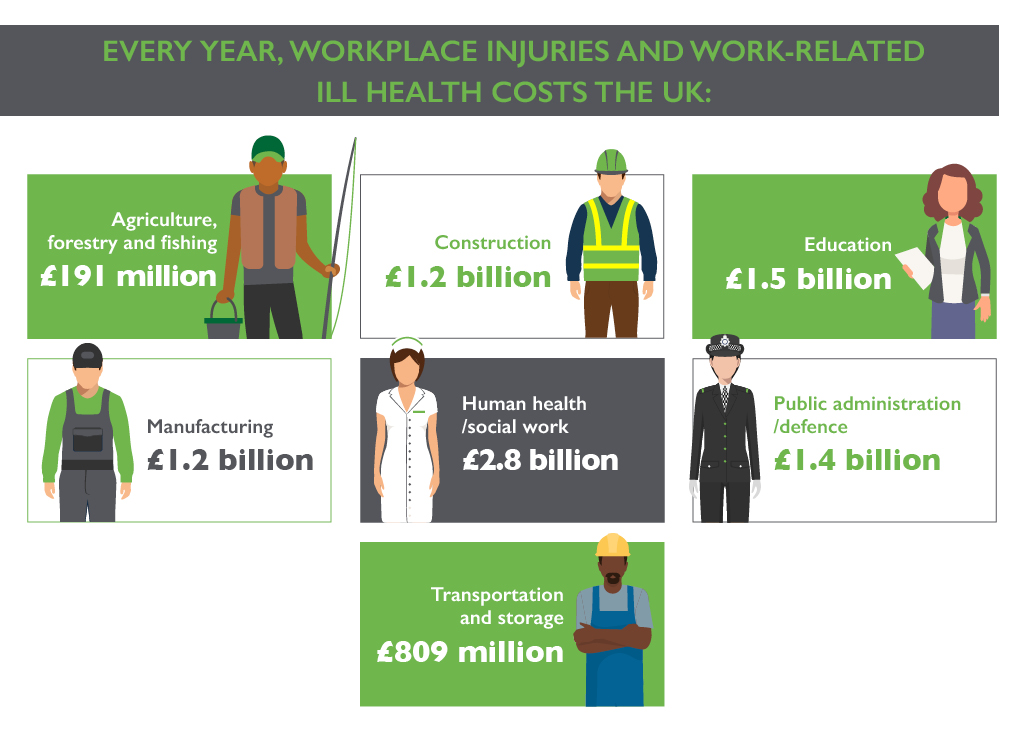Workplace accidents are, in the majority of cases, completely avoidable. Yet thousands of people are injured at work every year, ruining - and in some instances, ending - lives and costing billions to the UK economy.
Nearly 40 million days were lost due to work-related ill health and non-fatal workplace injuries in 2019/20. On average, each person who suffered a work-related injury took 9.1 days off work. Those suffering from work-related ill health took 20 days off work. Not only do injuries and ill health have an impact on the individual’s quality of life, the costs of accidents in the workplace also place a financial strain on businesses too.
Workplace accidents cost the UK an estimated £5.6 billion every year
Work-related accidents and ill health cost the UK £16.2 billion in 2018/19. While the majority of the costs of accidents in the workplace fall on the injured person, a proportion of the figure comes out of the employer’s pocket. In 2018/19, work-related injuries and illnesses cost employers £3.2 billion.
Looking after workers’ health and safety isn’t just the right thing to do, it’s the commercially smart thing to do.
The costs of accidents in the workplace to employers could include the cost of insurance, loss of production due to absence from work, additional staff to cover those who are absent, and healthcare costs. There are is also an indirect cost of workplace accidents, such as productive time lost by those helping the accident victim, operational time lost as a result of the accident or a drop in morale.
Employers should be doing everything they can to avoid workplace injuries from happening in the first place.


How can employers protect their workers?
There are lots of things employers can do to help reduce the risk of accidents at work, properly protect their workforce and drive down the costs of accidents in the workplace.
Here are just a few examples of how employers can help to keep their workers safe while reducing the cost of work-related accidents:
- Recognise trade unions and allowing them to organise in the workplace
- Provide workers with adequate health and safety training
- Engage with staff health and safety representatives
- Carry out regular inspections of the workplace, including risk assessments
- Put necessary procedures in place to safeguard workers
- Set up emergency plans
- Control workers' exposure to hazardous substances
- Review work practices ensure they are as safe as possible
- Make sure equipment is safe to use and test it regularly
- Ensure workers are alerted to danger by displaying warning signs where necessary.
Source: www.hse.gov.uk/statistics
